I regularly hear “motivated” people who have drank deeply from the cup of self-sufficiency express fervent intent on “prepping” and “getting ready” and then promptly spin their wheels, do nothing, and generally waste time.
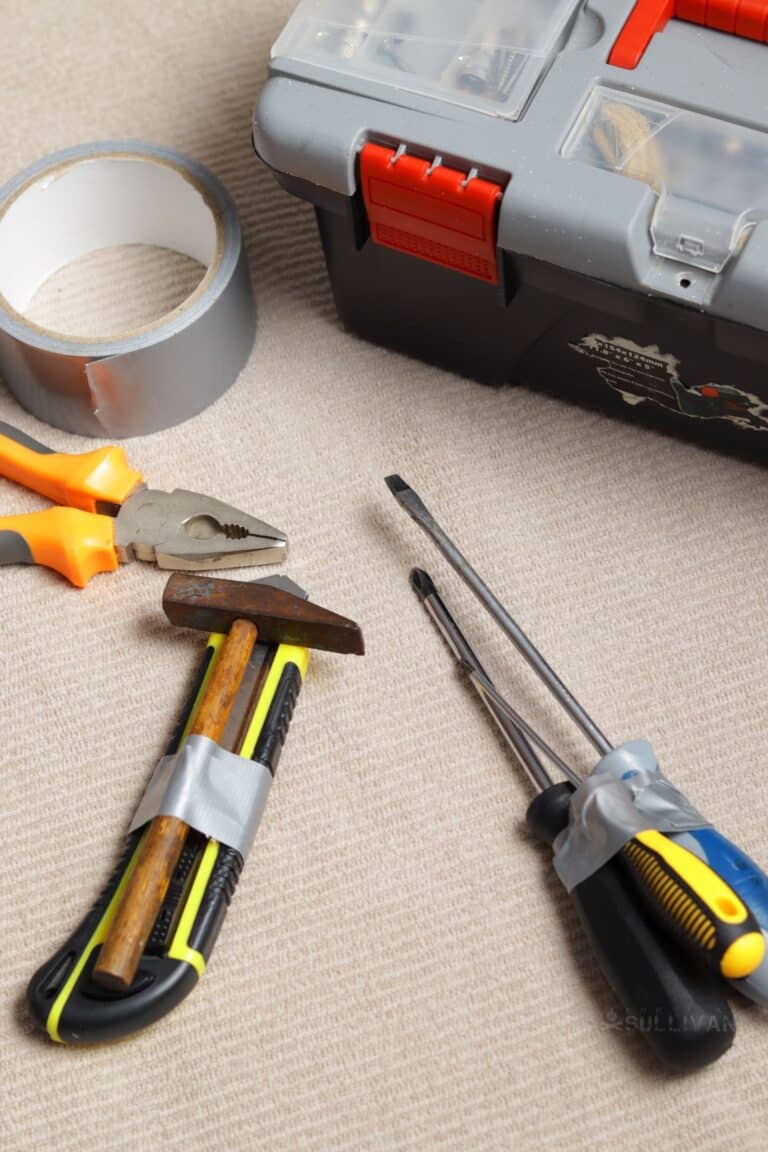
Whatever the cause, be it uncertainty, lack of a plan or just sheer, plain laziness, talk is, of course, cheap. The true adherent honors the path with deeds and not words.
So in the interest of helping the lost and wayward novices gain momentum on their path while making good purchases, and saving everyone else a little time and money, I have assembled a list of some of my favorite, cheapest gear that is still actually useful when Mr. Murphy throws a surprise party for you.
Keep in Mind
All of these items are $10 or less retail, and each is genuinely useful. I have, as always, kept an eye toward quality, but even with gear that trends toward the small side of the size spectrum none of these items are world-beating quality. But then again, they don’t have to be. All can reliably do what they are intended to do when you need them.
You can always spend more and eke out a few more percentage points of performance with an elite level product, and you can always pay so little that the thing is really just emulating the form factor of the device you thought you were buying and nothing else.
I don’t recommend the last option, and the first option may not be prudent unless you are really flush with cash. Value, real value, is always what we are seeking.
The intent of this list is to provide you with gear choices or ideas for gear that you can get at a variety of brick-and-mortar retailers without much diversion from your daily travels.
I have listed specific brands where appropriate but you may find an alternate or even a similar substitution that you like better. That’s fine, get what you prefer; this list is ultimately a guide, not a “Best of the Best, Period!” piece.
So, hopefully, I didn’t check your expectations too hard. Let’s get to the list.
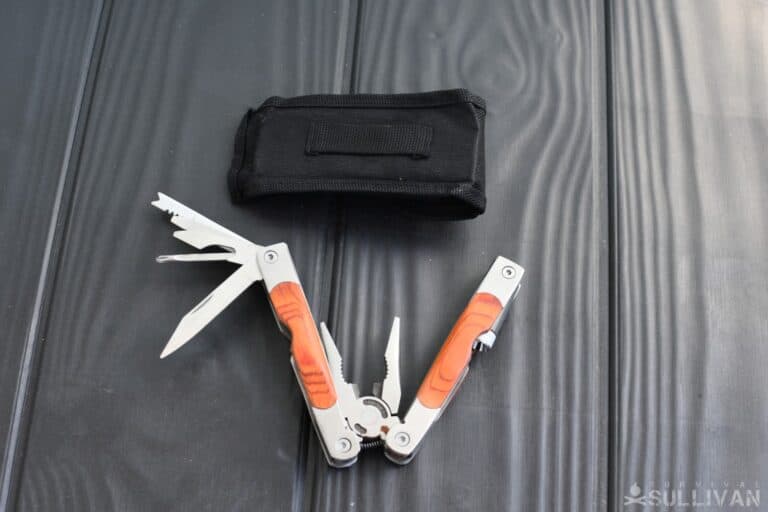
Multi-Tool
A multi-tool is an indispensable item for a survival kit, and often has a place in your EDC gear as well. A multi-tool’s various functions will be called on more or less regularly for maintenance tasks: tightening and loosening fasteners, cutting, prying, scraping, and opening the all-important bottle of tasty beverage.
The Gerber Shard, one of my favorites in this price point, definitely does not look like a typical multi-tool. It looks more like a piece of shrapnel that popped of the old dryer you blew up with a shotgun.
Within that tiny envelope it packs in both flat and Phillips drivers, a bottle opener, wire stripper and a tiny but well designed pry bar. The lanyard hole is a missed opportunity for a hex drive socket, but serves well enough to hang it from your keychain or cordage.
On the surface, it looks pretty worthless, but I have used mine constantly when discover a small screw loose on gear or am dealing with a stubborn or stuck panel or battery door.
In a pinch, I once used it in conjunction with a heavy Maglite to defeat a recalcitrantly glued board, saving my knife from possible damage. The pry bar will never do the job of a proper crowbar, even a trim bar, but it is handy, and close at hand.
You can get one of these guys for around $7.00 at Wal-Mart or Home Depot. If you really want a blade on your multi-tool, consider a Classic Swiss army knife or a competitor’s version of that legendary little knife.
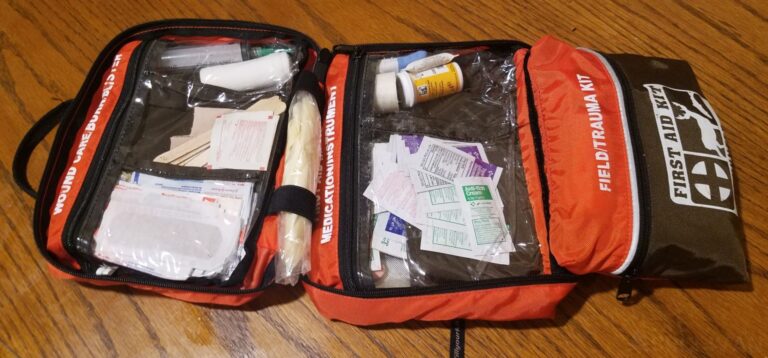
First-Aid Kit
At nearly any department or outdoor store in the land you can find the small first aid kits in either a little clamshell container or sealed foil pouch.
These usually contain band-aids, tweezers, ointment and the like, not supplies for dealing with trauma. That’s ok, because you need both a minor first aid kit, and a dedicated trauma kit. It is the former I am referring to with this entry.
A minor first-aid kit, sometimes called a snivel kit or boo-boo kit is for taking care of injuries and ailments that are not intrinsically life-threatening but will make you miserable, or potentially develop into serious afflictions. For about $10 you can get one that has more or less everything you need in a good first-aid kit, and then add a little more to it.
A good boo-boo kit will have things like band-aids, butterfly closures, a gauze pad or two (for compactness), knuckle bandages, first aid tape, moleskin (for blisters), antiseptic wipes or a tiny bottle of the wash, and a few doses of various meds for common ailments; pain, nausea, sting/burn relief, etc.
Most are not packed super efficiently and with a little rejiggering you can add a few more items you want.
Notice how all of those things are pretty nice to have, and the gauze pads and tape can let you treat a minor laceration or cut. Take the time to pick out a good one that has most of the items above, not one that is merely a glorified box of band-aids and ointment alone.
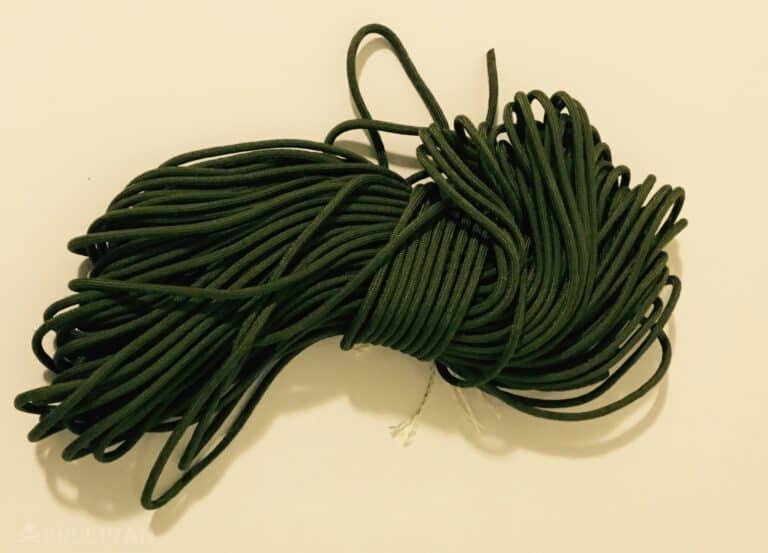
550 Paracord
Paracord is the ubiquitous cordage of preppers, shooters, survivalists, hunters, explorers, warfighters and campers. It is synonymous with extreme strength in a variety of situations, and used for countless tasks, from shelter setup, lashing, binding and tying to trapping, fishing and creating super-strong bootlaces.
To be honest, paracord is overkill for most situations, considering you won’t use even a fraction of its considerable strength in any given task. But it is so widely available and versatile it is a shoe in on our list. If you have paracord, you have options as the saying goes.
A small hank of paracord is pretty compact, and can also be woven into bracelets, necklaces, key chains and slings or around other gear to save space when carrying it.
When purchasing, look for a major manufacturer’s label, not a generic or store brand. The strength of commercial offerings varies from military specification with some makers, so to get the most from your purchase go with the known.
The genuine article, or at least an equivalent, will be rated to hold 550 lbs of weight (hence the name) and usually reference C-5040H TYPE III specification. Seeing both of those on the same item’s packaging usually means you are getting the good stuff.
Expect to spend around $8-$10 for a small bundle of quality stuff, sometimes a little less. Once you have it, take a look around on the site here to find out all the fun and wonderful things you can do with it!
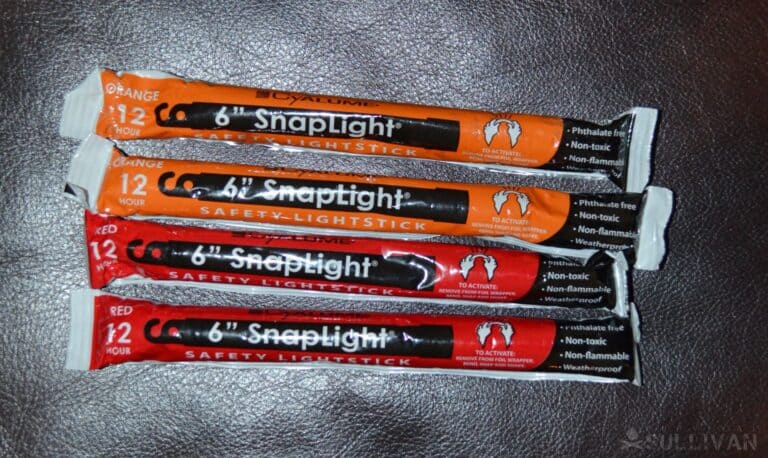
Chemlights
Chemlights, or snaplights as they’re also called, are those plastic tubes of glowing green liquid you see around Halloween and in the hands of ravers.
When you bend the light body sharply an internal vial breaks, mixing a pair of chemicals that glow brightly for hours. Though they look like something out of a nuclear reactor, chemlights are as safe as they get when it comes to lighting.
They produce no appreciable heat, are non-toxic, and have no glass bulbs or lenses to break. When you need light, it is only a snap and shake away with one of these. They are available in many colors besides green, and each has pros and cons. Some are a little longer lasting while others are a little brighter.
Chemlights work great as soft area lighting, for signaling, marking and any task where you need a no-fail, long-lasting source. They are also a good way to cheer up a scared or upset child in a pinch.
Chemlights of decent quality are available at big-box hardware stores like Lowe’s and Home Depot for as little as $1.00 apiece. The best ones, and the ones used by the military, are Cyalume brand and a little more per light. I do not recommend you get these at a party supply store, but if you have no other option you can take your chances.
Mini-Compass
No knowing where you are sucks. Not knowing where you are or where you’re headed sucks even worse. You can prevent the latter and hopefully the former with a compass!
Even if you don’t know much about land navigation, knowing which way you are going is vital when you are lost or lose other navigational methods. Good compasses can cost several hundred dollars for the best tech, but for our purposes knowing which way is north will get us by most of the time.
To save space, weight, and few bucks you should look into a tiny button compass, sometimes called a clip-on compass. As the name suggests, these little guys are about the size of a large button, and often clip on to backpack straps or watchbands for convenience and loss prevention.
While they are not as easy to read, and often not quite as precise or accurate as larger field compasses, that’s ok. You can get these all day under $10 online, and usually for a little more in a store.
Beware, many of these are little more than party favors. Suunto makes one of the best in the category at a modest price point, the Clipper, and if you are willing to shop a little these can be snagged for right at $10.
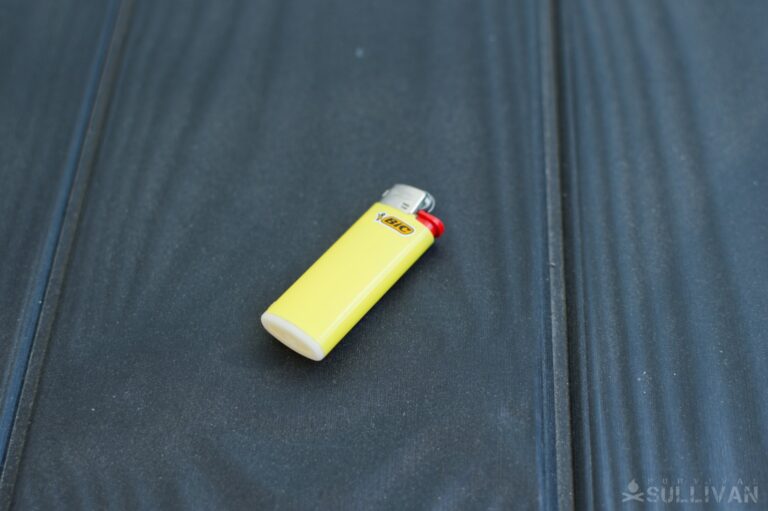
Lighters
Fire starting is a big topic among preppers and outdoorsy types. You’ll find over half a dozen articles about the subject on this very site.
Many people extol the virtues of ferro rods and similar devices for survival situations, and you’ll have no shortage of seasoned, salty survival instructors who preach the good word about primitive fire-starting techniques.
Those both have a place (you should be learning to utilize primitive techniques) but when you need to get a fire going now nothing beats clicking a lighter.
And that is exactly what I recommend you buy and carry. A disposable butane Bic is reliable, affordable, and extremely compact. In all but the very coldest weather you can strike the wheel and expect it to light up.
If it fails in cold weather, this is usually due to the fuel being too cold, not any mechanical defect; keeping it in a pocket close to your body alleviates this concern.
You still need fuel for the fire, and knowing how to build and maintain a campfire or signal fire is a skill you’ll have to develop on your own, but having a reliable fire-starting tool is important.
You can get these absolutely anywhere for a dollar and change. Get several, and don’t play with them. Keep them in reserve for their intended purpose, and keep track of the fuel level.
Tinder
Our companion prep for the previous item. Tinder is any highly combustible material used to start a fire. Technically tinder is used to ignite kindling which ignites your main fuel, but to keep things from getting too pedantic we’ll address tinder as our take-along helper for fire starting.
Tinder could be all kinds of materials; dryer lint, magnesium, a finely shaved and feathered stick, down, char-cloth, cotton balls, store-bought commercial pellets, all-kinds of things.
One of the nice things about tinder is most of it is very compact, easy to carry and often free! If you want a good standby option go raid the lint trap in your dryer, and stuff the collected lint into an old film canister or mint tin to help keep it dry so it will be ready to use.
Another option I mentioned above, magnesium, is a good one, as it is inexpensive, sold in virtually any camping store in bar form, and when shaved into a little pile and ignited, burns so furiously almost nothing can put it out.
Magnesium takes a little practice to use well, but you should still consider it for its ferocity. It can even ignite wet fuels!
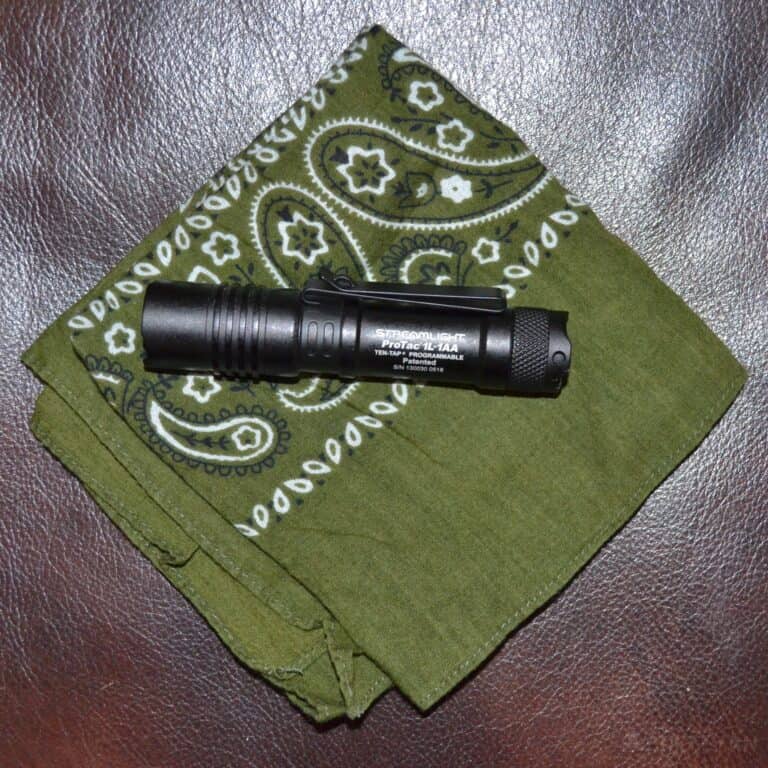
Bandana
No, you aren’t getting this to whip out so you can look the part of an apocalyptic survivor, though you might wind up doing so anyway. Bandanas are terrific multi-use tools that I have praised before on several occasions.
The basic bandana is a useful garment for providing cover from the sun, cooling down or drying off. It can give you some measure of protection against large airborne particulates, provide padding, be used as signal, rag and ground cover or catch-all.
It can be tied into a sack for carrying or storing gear. It can be used as a rudimentary bandage or pressure dressing. A bandana makes a fine pot holder around the cook fire, and a passable blindfold. The list goes on.
Look for a good bandana in outlets and other clothing stores. Cotton is the way to go, or perhaps a cotton-synthetic blend, but avoid all synthetic ones. Expect to spend $5-6 on a decent one.
When they wear out or get torn up, you can demote it to scuzz rag or TP duty, then discard it. Don’t leave home without one, and by one I mean two!
Pocket Knife
A decent blade is the one true tool no one should be without. From self-defense to innumerable tasks around home and in the field, a knife should be your constant companion.
In this price point it may be hard to find a decent knife of any size. Knife aficionados will surely have much to say in the comments, and I don’t blame them; I am a strong advocate of high-quality guns for my reasons just the same.
Nevertheless, there are knives worth having at this price point. They may not take you deep into the Amazon basin and bring you out again, but a sharp piece of steel is a sharp piece of steel.
Even the cheapest knife, kept sharp, can slash a stuck seatbelt, open heavy packaging or puncture a bad guy. Two solid choices in this price range are the legendary Opinel folding knives with wood handles, and, believe it or not, the Ozark Trail folders you can get at Wal-Mart.
The Opinel needs no introduction and is just about the least “tactical” knife imaginable, but they use good steel in their blades and come hair-popping sharp from the factory.
Though razor sharp, ultra-light, and a joy to carry, the simple folding system means you should definitely not use this knife for any heavy prying (else you risk splitting the handle). On sale, you can nab one of these lightweight wonders for right at $10 and they are often found in most any retailer that stocks knives.
The Ozark Trail folders usually run about $8 or $9. To be honest, I bought one as a beater knife that I have used around home and yard for all the things you shouldn’t use a knife for; scraping, prying, digging, etc.
It did not come super sharp out of the box, but took a fine edge with a little time on the whetstone. Mechanically it has held up like a champ and isn’t rusting despite the passing care I give it. Buy with confidence.
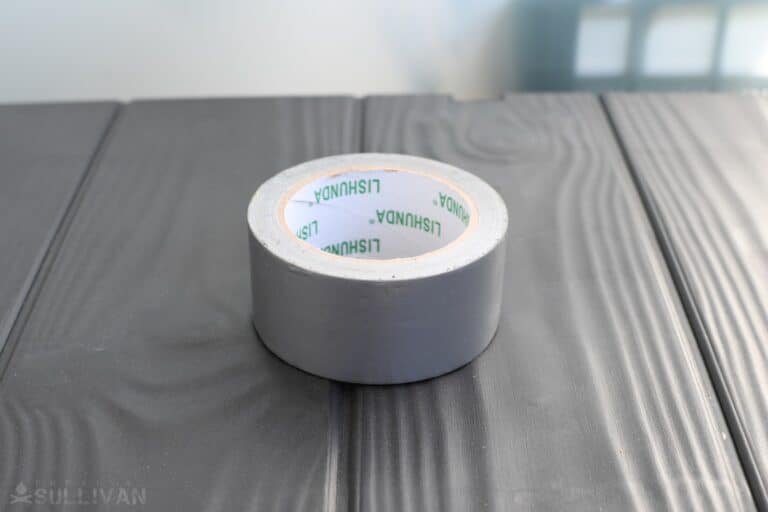
Duct Tape
For hasty repairs and improvised attachments of all kinds, duct tape is unbeatable. It even has utility for holding bandages in place. Duct tape always deserves a place in your prepper’s tool kit.
A large roll of duct tape can be bulky though, and many smart trekkers will often unroll it and wrap it around a water bottle, flashlight, or other cylindrical object. Alternatively, you can use a short section of your paracord to re-roll it tightly around.
This is one of those items where it pays to splurge a little. Brands of duct tape vary wildly in performance characteristics. I have used duct tape that was so strong and sticky it would literally rip hide from your hands, and other brands so lame and wimpy they weren’t fit to wrap a package with. If you are willing to spend $6-$9 on a roll you’ll be in the right neck of the woods.
My two favorite brands are Gorilla and T-Rex Tape. Both are super sticky, weather resistant and have thick, durable fabric backing. Once again, try not to be mooching this from your supplies for everyday tasks, though it is so useful you’ll have a hard time avoiding it!
Get These Essentials Today
There you have it. These are a few of my favorite super-budget tools that are still functional pieces of kit. Ten preps you can pick up today, almost anywhere, and on any budget.
No matter if you are new, indecisive, broke or just plain ol’ lazy, you won’t break a sweat obtaining any of these goodies. If you can supply the knowledge, they can help you get out of a tight spot.
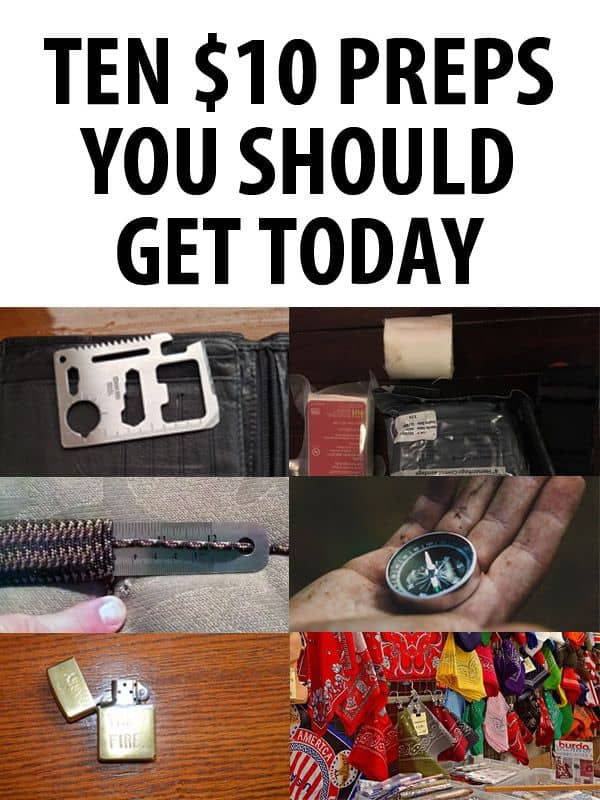
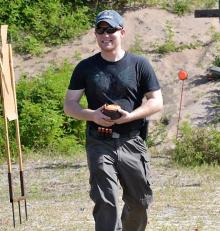
Chad Nabors specializes in firearms, with a strong focus on concealed carry and pistols. His background is in commercial sales and training, and armor development and testing. He has trained many citizens on the pistol from basic to advanced skills. He is a vociferous proponent of the 2nd Amendment, and believes that defense of self and family is a moral obligation. He can be reached at grimgunner (AT) gmail.com.

great article, I have one tip I have used for years for fire starters, I take a cotton ball size piece of dryer lint, compact and wrap in foil and place in the bottom of my pocket knife belt holster. This way I have at least one fire starter at all times
Good idea. I did cotton sash cord (curtain) into paraffin, allow it to become soaked, then remove and cut into small pieces. An 1 1/2″ will burn for approximately 5 minutes, allowing you to start a fire easily. Waterproof and lasts quite a long time. Does take prep time though – the above hint is a good one !
Darn it – forgot to add. Another Wal-Mart cheapie to look for is their Mora look-a-like. Costs about $3 (with sheath even) and takes a pretty good edge. A decent ‘better than nothing’ knife, about a 1/3 of the price of the real deal.